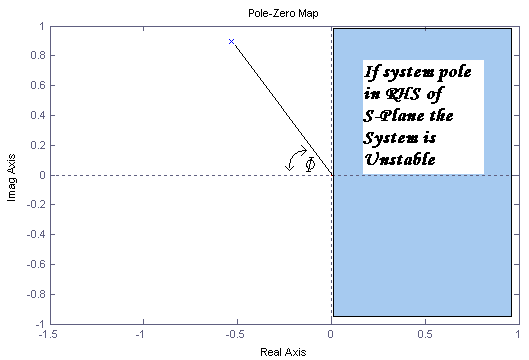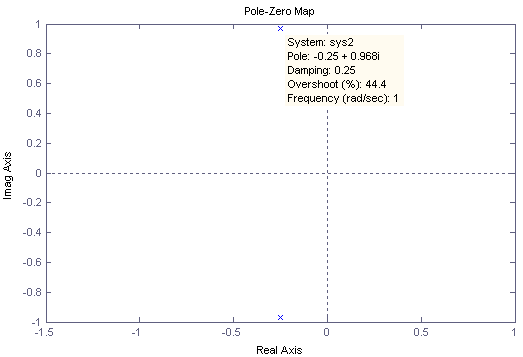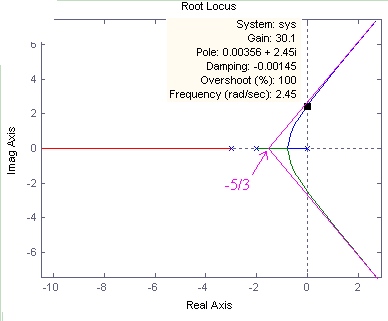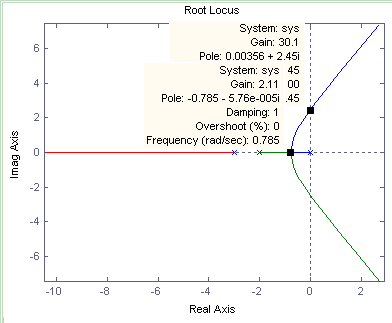|
Home
Up
| |
ROOT LOCUS:
Used on the open loop system transfer function
to calculate closed loop response:
When f
= 0 deg, z =
1 and when f = 90
deg, z = 0
using the equation z
= Cos (f)


Basic Steps to Obtain The Root Locus of a closed loop control system
- Step
 | Find the characteristic equation and arrange it to be in the form |
 | P(s) + K*Q(s) = 0
 | P(s) represents the poles and Q(s)
represents the zeros |
|
Step
 | factor P(s),Q |
 | (s + a1)...(s + an) + K*(s + b1)...(s + bn) = 0 |
Step
 | Draw the position of the poles and zeros on the s-plane |
Step
 | Locate the segments of the real axis that are parts of the root locii
using the rule
 | The root locus on the real axis always lies to the left of an odd
number of poles |
|
Step
 | Find how many separate locii and
asymptotes there are using the rule
 | The number
of separate locii is equal to the number of poles |
 | The number of asymptotes =
Number of Poles - Number of Zeros |
|
Step
 | Note that root locii are symmetrical about the horizontal real axis |
Step
 | Locii proceed to the zeros at infinity along asymptotes centred at
sa
with angles fa the asymptotes are
centred at a point on the real axis given by:
 | sa = S
poles of P(s) - S zeros of P(s) / (npoles
- nzeros) |
 | fa = (2q + 1)*180º/(npoles
- nzeros) where q = 0,1,... |
|
Step
 | Find the point where the locus crosses the imaginary axis by using the
Routh-Hurwitz criterion |
Step
 | Find the breakaway point, if any, on the real axis, note that the
tangents to the breakaway point are equally spaced over 360º |
Step
 | Find the angle of departure of the locus from a pole and the angle of
arrival of the locus at a zero. Use the fact that |
Step
 | Find the root locations that satisfy the phase criterion at the root sj
where j = 1,2, ...,npoles |
EXAMPLE
The Characteristic Equation is given as:
|



